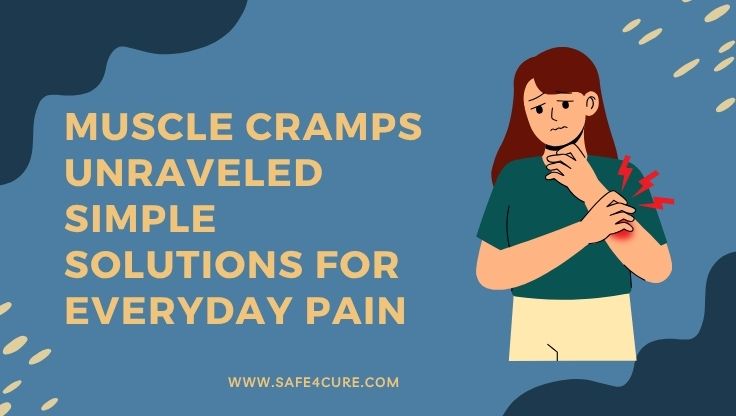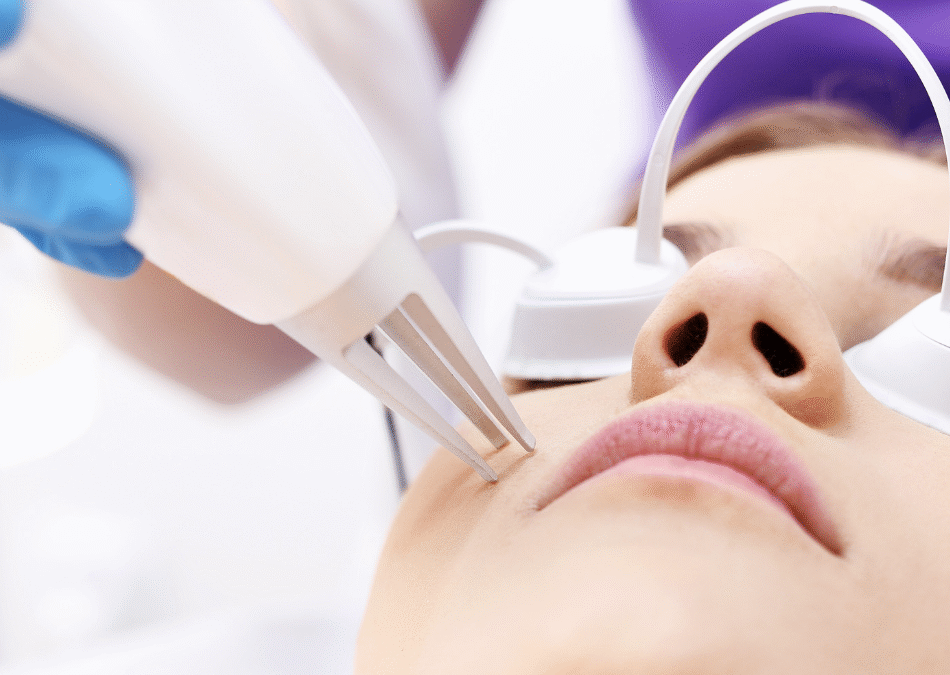Muscle cramps are a common and often uncomfortable issue among older adults, with research indicating that nearly 60% of seniors experience frequent cramping episodes. These sudden, involuntary muscle contractions can range from mild discomfort to intense body muscle cramps that interfere with daily routines and disrupt restful sleep.
As we age, natural changes in muscle function, hydration levels, and nerve activity increase the likelihood of experiencing painful cramps. Recognizing the signs of muscle spasms, understanding their causes, and exploring targeted treatment options mincluding the use of muscle cramps supplements can make a significant difference in managing this condition. Certain supplements, such as magnesium, potassium, and calcium, may help support muscle health and reduce the frequency of cramps in seniors.
This comprehensive guide provides essential insights into the causes of muscle cramps in older adults, along with practical remedies, effective supplements, and proven prevention strategies to help maintain comfort and quality of life.
Understanding Muscle Cramps in Seniors
What Are Muscle Cramps?
Muscle cramps are sudden, involuntary contractions of one or more muscles that can last anywhere from a few seconds to several minutes. In older adults, these episodes often occur without warning and can affect any muscle group, though they most commonly impact the legs, feet, and hands.
Why Older Adults Are More Prone to Cramping
Several age-related factors contribute to increased cramping frequency:
Reduced Muscle Mass: Sarcopenia, the natural loss of muscle tissue that begins around age 30, accelerates after 60. This loss of muscle fibers can lead to imbalances that trigger sudden muscle spasms.
Decreased Physical Activity: Sedentary lifestyles common among seniors can result in muscle weakness and poor circulation, creating conditions conducive to all muscles cramping up.
Medication Side Effects: Many medications prescribed to older adults, including diuretics, statins, and blood pressure medications, can contribute to electrolyte imbalances that cause cramping.
Chronic Health Conditions: Diabetes, kidney disease, liver disorders, and thyroid problems frequently seen in older adults can increase cramping risk.
Common Causes of Muscle Cramps in Older Adults
Dehydration and Electrolyte Imbalances
Dehydration is one of the leading causes of muscle cramps in seniors. As we age, our sense of thirst diminishes, and kidney function may decline, making it harder to maintain proper fluid balance. When combined with electrolyte imbalances involving sodium, potassium, magnesium, and calcium, the risk of extreme muscle cramps increases significantly.
Poor Circulation
Age-related changes in blood vessels and reduced physical activity can lead to poor circulation, particularly in the extremities. This decreased blood flow can result in oxygen and nutrient deficiencies that trigger cramping episodes.
Nerve Compression and Neurological Changes
Spinal stenosis, herniated discs, and other age-related spinal conditions can compress nerves, leading to muscle cramps when stretching or during certain movements. Additionally, peripheral neuropathy, common in diabetic seniors, can cause irregular nerve signals that result in cramping.
Overuse and Muscle Fatigue
Even moderate activities can cause muscle fatigue in older adults with reduced muscle mass and endurance. This fatigue can lead to painful muscle cramps, especially after periods of increased activity or exercise.
Sleep-Related Factors
Nocturnal leg cramps are particularly common in older adults, often related to prolonged periods of inactivity, dehydration, or sleeping in positions that restrict blood flow.
Types and Severity of Muscle Cramps
Mild to Moderate Cramps
These are the most common type, typically affecting single muscle groups and lasting less than a minute. While uncomfortable, they usually don’t require medical intervention.
Severe and Extreme Muscle Cramps
These intense episodes can be debilitating, affecting multiple muscle groups simultaneously and causing significant pain. Severe body muscle cramps may indicate underlying health issues that require medical attention.
Full Body Cramps
When all muscles cramping up occurs, it’s often a sign of serious electrolyte imbalances, dehydration, or medication side effects. This condition requires immediate medical evaluation.
Signs and Symptoms to Watch For
Early Warning Signs of a Muscle Spasm
Recognizing the signs of a muscle spasm before it fully develops can help with early intervention:
- Muscle twitching or fasciculations
- Unusual muscle tension or tightness
- Tingling or numbness in the affected area
- Mild aching or discomfort that gradually intensifies
Identifying Different Types of Muscle Spasms
Tonic Spasms: Sustained muscle contractions that cause stiffness and rigidity
Clonic Spasms: Rapid, rhythmic muscle contractions that cause jerking movements
Mixed Spasms: Combination of both tonic and clonic characteristics
When Cramps Become Concerning
Seek medical attention if you experience:
- Cramps that last longer than 10 minutes
- Frequent episodes (daily or multiple times per week)
- Cramps accompanied by swelling, redness, or skin changes
- Severe pain that doesn’t improve with standard treatment
- Full body cramping episodes
Effective Muscle Cramps Treatment Options
Immediate Relief Strategies
Gentle Stretching: Slowly stretch the affected muscle in the opposite direction of the cramp. For calf cramps, flex your foot upward; for hamstring cramps, straighten your leg and lean forward gently.
Massage and Pressure: Apply firm, gentle pressure to the cramped muscle using your hands or a tennis ball. Massage in circular motions to help relax the muscle fibers.
Heat and Cold Therapy: Apply a warm compress or heating pad to relax tight muscles, or use ice to reduce inflammation if there’s swelling present.
Hydration: Drink water immediately, and consider electrolyte solutions if dehydration is suspected.
Long-Term Management Approaches
Regular Exercise Program: Implement a balanced routine including low-impact cardio, strength training, and flexibility exercises. Water aerobics and gentle yoga are particularly beneficial for seniors.
Proper Hydration Protocol: Aim for 8-10 glasses of water daily, adjusting for activity level and climate. Monitor urine color as a hydration indicator.
Stretching Routine: Perform daily stretching exercises, particularly before bedtime, focusing on commonly affected muscle groups like calves, hamstrings, and quadriceps.
Muscle Cramps Supplements and Nutritional Support
Essential Minerals for Cramp Prevention
Magnesium: This mineral plays a crucial role in muscle function and nerve transmission. Recommended dosage for seniors is 320-420mg daily, but consult your healthcare provider before starting supplementation.
Potassium: Helps maintain proper muscle and nerve function. Good sources include bananas, oranges, potatoes, and leafy greens.
Calcium: Essential for muscle contraction and relaxation. Dairy products, fortified plant milks, and leafy greens are excellent sources.
Sodium: While often restricted in senior diets, adequate sodium levels are necessary for proper muscle function, especially in active individuals.
Recommended Supplements
Magnesium Glycinate: Highly absorbable form with minimal digestive side effects Calcium-Magnesium Combinations: Balanced formulations that support muscle function Electrolyte Powders: Convenient options for maintaining mineral balance Vitamin D3: Supports calcium absorption and muscle function
Foods That Help Prevent Cramps
Incorporate these nutrient-rich foods into your daily diet:
- Bananas and avocados (potassium)
- Leafy greens and nuts (magnesium)
- Dairy products and fortified foods (calcium)
- Sweet potatoes and beans (multiple minerals)
Managing After Cramps Muscle Pain
Post-Cramp Recovery Strategies
After experiencing a muscle cramp, the affected area may remain sore and tender. This after cramps muscle pain can last several hours to days, depending on the severity of the episode.
Gentle Movement: Light activity and gentle stretching can help restore normal muscle function and reduce stiffness.
Anti-Inflammatory Care: Over-the-counter pain relievers like ibuprofen can help reduce inflammation and pain, but use as directed and consult your healthcare provider.
Continued Hydration: Maintain fluid intake to support muscle recovery and prevent additional episodes.
Rest and Elevation: If cramping occurred in the legs, elevate the affected limb when resting to improve circulation.
Preventing Recurrent Episodes
Focus on addressing the underlying reason for muscle spasms through lifestyle modifications, proper nutrition, and medical management of contributing conditions.
Understanding Full Body Cramps Causes
Serious Underlying Conditions
When experiencing full body cramps, several serious conditions may be responsible:
Severe Dehydration: Often accompanied by dizziness, confusion, and rapid heartbeat Kidney Disease: Affects electrolyte balance and fluid regulation Liver Dysfunction: Impacts protein synthesis and mineral metabolism Endocrine Disorders: Thyroid and parathyroid issues can cause widespread cramping
Medical Emergencies
Full body cramping combined with the following symptoms requires immediate medical attention:
- Difficulty breathing
- Chest pain
- Severe weakness
- Confusion or altered mental state
- Fever or signs of infection
Precautions and Safety Measures
Exercise Precautions
Warm-Up Protocol: Always begin exercise with 5-10 minutes of gentle movement to prepare muscles and improve circulation.
Gradual Progression: Increase activity intensity and duration slowly to avoid overexertion and muscle fatigue.
Proper Hydration: Drink water before, during, and after physical activity, especially in warm weather.
Listen to Your Body: Stop activity immediately if you experience muscle twitching, unusual fatigue, or early cramp warning signs.
Medication Considerations
Regular Reviews: Work with your healthcare provider to review all medications and identify those that may contribute to cramping.
Timing Adjustments: Some medications may be better tolerated at different times of day to minimize cramping risk.
Supplement Interactions: Be aware that some supplements can interact with prescription medications, particularly blood thinners and heart medications.
Sleep Safety
Proper Positioning: Use pillows to support legs and maintain proper alignment during sleep.
Temperature Control: Keep the bedroom at a comfortable temperature to prevent overheating or excessive cooling that might trigger cramps.
Bedtime Routine: Perform gentle stretches before bed and keep water nearby for nighttime hydration.
When to Seek Medical Help
Red Flag Symptoms
Contact your healthcare provider immediately if you experience:
- Sudden muscle spasms that are different from your usual pattern
- Cramps accompanied by muscle weakness or numbness
- Signs of infection (fever, redness, warmth) in the affected area
- Cramps that interfere significantly with daily activities or sleep
Diagnostic Considerations
Your healthcare provider may recommend:
- Blood tests to check electrolyte levels and kidney function
- Neurological evaluation if nerve involvement is suspected
- Medication review to identify potential contributing factors
- Sleep study if nocturnal cramps are severe
Frequently Asked Questions (FAQs)
Q: Why do muscle cramps seem worse at night?
A: Nocturnal cramps are common due to prolonged periods of inactivity, dehydration that develops throughout the day, and sleeping positions that may restrict blood flow. Additionally, certain medications are more likely to cause cramping when taken in the evening.
Q: Can muscle cramps be a sign of a serious medical condition?
A: While most cramps are benign, frequent or severe episodes can indicate underlying conditions such as diabetes, kidney disease, or circulation problems. Sudden muscle spasms that are unusually painful or frequent warrant medical evaluation.
Q: How long should I wait before seeking medical help for muscle cramps?
A: Seek immediate care for cramps lasting more than 10 minutes, accompanied by severe pain, or occurring with other concerning symptoms. For recurring cramps that interfere with daily life, schedule an appointment with your healthcare provider within a few days.
Q: Are there any foods I should avoid to prevent muscle cramps?
A: Limit excessive caffeine and alcohol, as both can contribute to dehydration. Also, be cautious with very salty foods if you have high blood pressure, as this may affect your medication balance and cramping risk.
Q: Is it safe to exercise if I frequently experience muscle cramps?
A: Yes, but with modifications. Focus on low-impact activities, ensure proper warm-up and cool-down, stay well-hydrated, and stop immediately if cramping begins. Water exercises are particularly beneficial as they provide resistance with less strain on muscles.
Q: How effective are muscle cramps supplements?
A: Magnesium supplements can be effective for many people, particularly those with deficiencies. However, it’s important to work with your healthcare provider to determine the right type and dosage, as some supplements can interact with medications commonly used by seniors.
Q: What’s the difference between a muscle cramp and a muscle strain?
A: A cramp is a sudden, involuntary contraction that typically resolves quickly, while a strain is an injury to muscle fibers that causes persistent pain and may require longer recovery time. If pain persists after the muscle relaxes, it may indicate a strain.
Q: Can dehydration really cause severe body muscle cramps?
A: Absolutely. Dehydration affects electrolyte balance and can lead to widespread cramping affecting multiple muscle groups. This is particularly dangerous in older adults who may have diminished thirst sensation and are taking medications that affect fluid balance.







0 Comments